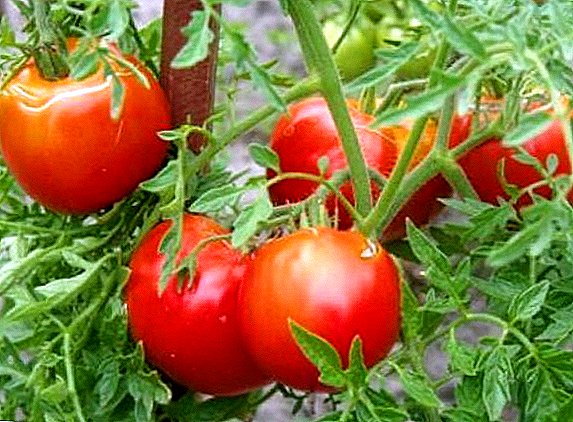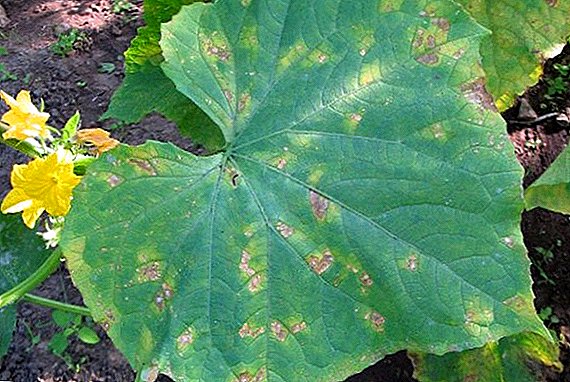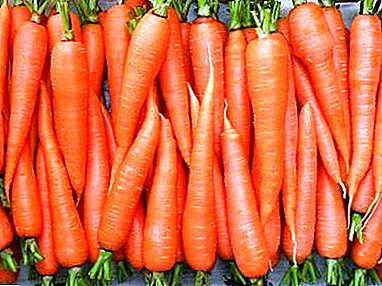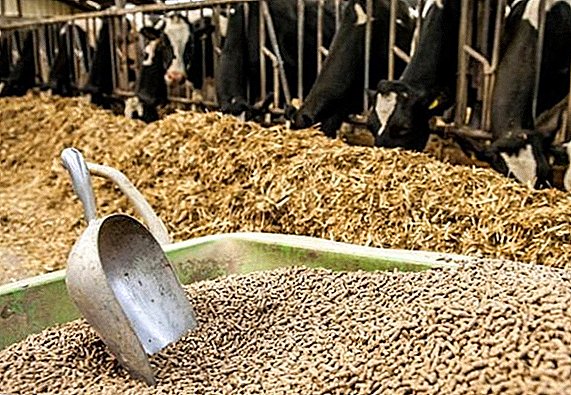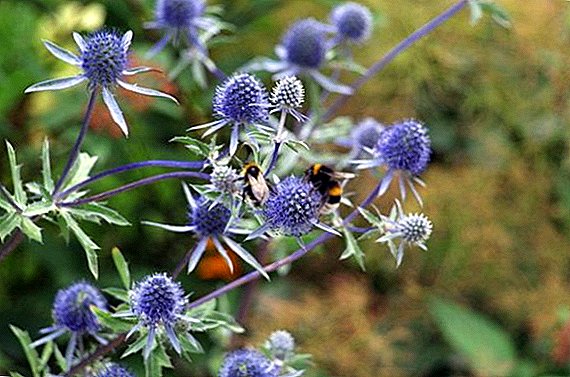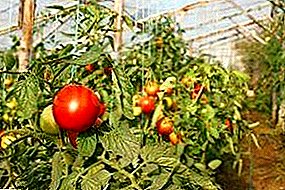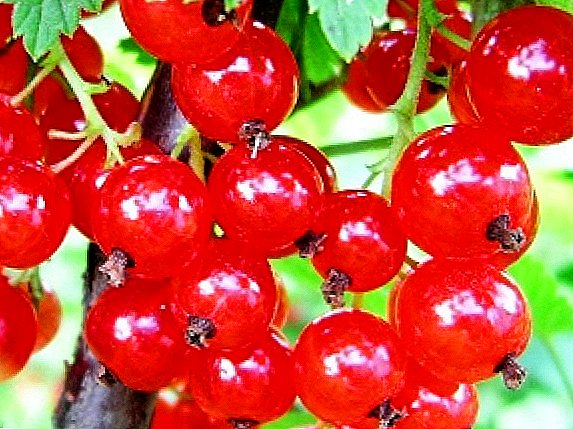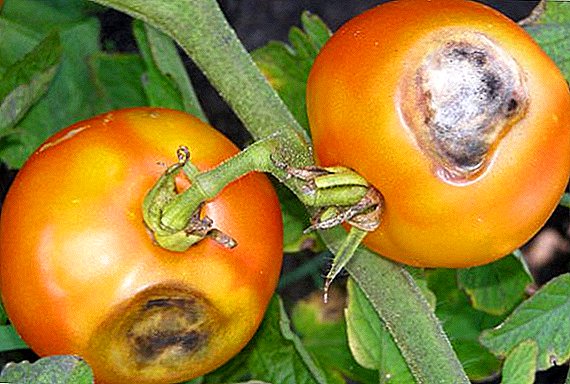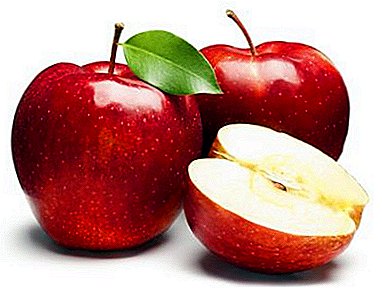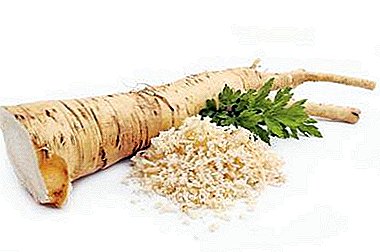
Long since horseradish is a plant that has been used both in medicine and in cooking. Interest in it exists to this day. However, before using it for one purpose or another, it is necessary to understand and learn all about its beneficial, harmful properties.
In this article we will describe the chemical composition of horseradish, its benefits and harms for each sex and age, products with the addition of root vegetables, compare its properties with the properties of mustard. And also we will mention contraindications to the use of a root and its day norm.
Chemical composition: what vitamins, how many calories in it and other elements
- Calorie content: per 100 grams of product accounts for 56 kcal.
- Vitamins: it is enriched with vitamin C. So, in it it is more than in lemon, but less than in wild rose and black currant. Also contains nicotinic acid and vitamins of group B.
- Micro - and macronutrients. The composition of horseradish is:
- calcium;
- potassium;
- sodium;
- iron;
- essential mustard oils;
- starch;
- phytoncides.
It also contains carotene, amino acids.
It turns out that the chemical composition of this vegetable fills it with many useful properties. It makes it sharp substance sinigrin, essential oils contribute to the formation of a characteristic odor.
Reference! 100 grams of horseradish contains 3.2 grams of proteins, 0.4 grams of fat and 10.5 grams of carbohydrates.
Useful and harmful properties of the plant for women, men,
children
 For men. Horseradish is a natural aphrodisiac, therefore it is used to stimulate sexual desire, improve reproductive function, restore potency. It also helps to improve blood circulation in the pelvis, thereby reducing the risk of prostatitis.
For men. Horseradish is a natural aphrodisiac, therefore it is used to stimulate sexual desire, improve reproductive function, restore potency. It also helps to improve blood circulation in the pelvis, thereby reducing the risk of prostatitis.However, you should not use too much of this spice, as there are side effects: coughing, tearing, discomfort in the stomach and intestines.
- What is useful for women? Since this product improves digestion and metabolism in general, it is primarily useful for the woman's body as a corrective figure remedy, which has been used by nutritionists, creating many diets based on horseradish. As a cream in combination with other components is used to reduce cellulite.
- For kids. It is useful or not for children, it is difficult to answer, but until 4 years it is better not to give this plant, since its use can contribute to the disruption of the gastrointestinal tract. If there are no diseases associated with the work of the kidneys, liver, stomach, then horseradish can be consumed in small doses for good immunity and as an aid in fighting the flu, cough and bronchitis.
How much can you eat per day?
On average, it is recommended to consume horseradish no more than 10 grams per day. At the same time, these 10 grams should be divided into several meals. It is necessary to adhere to the norm, as excessive consumption can lead to indigestion, nausea and other consequences.
Since there are many recipes with horseradish for the treatment of diseases by ingestion, as well as for the manufacture of compresses, it is necessary to strictly follow the rate of use, which they spelled out. Otherwise, you can instead buy additional health problems.
Useful, harmful properties of leaves and root for human health, recipes
Leaves are enriched with many vitamins., which have a beneficial effect on human immunity, being also an antioxidant and antibiotic, because of the content of phytoncides. In this regard, this part is often used as tinctures and compresses for the treatment of:
- osteochondrosis;
- osteoporosis;
- atherosclerosis.
So, the tincture can be used for external use to relieve pain, and apply inside.
Tincture can be obtained as follows:
- Grind the leaves.
- Pour them with vodka, leave for a week.
- Then strain and it is ready to eat.
- You can also add lemon juice.
 With regards to compresses, the leaves are scalded with boiling water and applied to the painful part of the spine. They are also used to relieve headaches. For this you need to attach them to the temples for ten minutes.
With regards to compresses, the leaves are scalded with boiling water and applied to the painful part of the spine. They are also used to relieve headaches. For this you need to attach them to the temples for ten minutes.
The leaves are a good seasoning for pickled cucumbers and tomatoes.. In connection with its antibacterial effect, it can be added to conservation to preserve products.
Along with these positive opportunities, you can not get involved in the use of horseradish leaves, as they can lead to disruptions in the work of the digestive system. Mustard oil, if used inappropriately and often, can cause skin burns and gangrene.
Unlike leaves, horseradish root is even more useful.. So, it contains:
- cellulose;
- vitamin C;
- B vitamins;
- magnesium;
- potassium;
- phosphorus.
With such a rich composition and wide application. As lotions used to disinfect wounds, abrasions, cuts. In the rubbed form, it is used as a mustard plaster with hypothermia, rheumatism and back pain. And making a tincture of water is used to get rid of age spots.
If a person does not know his diseases, eating horseradish root can have serious consequences. So, it is important to know the acidity of your stomach. When increased, you should not use this vegetable, as it entails an even greater increase in acidity.
Turns out that leaves and root of horseradish are similar in composition of minerals and vitaminsbut differ in quantity. At the root of them contains more.
We invite you to watch the video on the preparation of tincture of horseradish leaves:
Is Mustard Better?
 What is more useful: mustard or table horseradish? Difficult to answer, because of their properties, both additives are similar. They belong to the cabbage family and contain the same substances, for example, essential oil, sodium, potassium. Both plants have a good effect on metabolism, are used for warming, baldness, and also for the treatment of SARS.
What is more useful: mustard or table horseradish? Difficult to answer, because of their properties, both additives are similar. They belong to the cabbage family and contain the same substances, for example, essential oil, sodium, potassium. Both plants have a good effect on metabolism, are used for warming, baldness, and also for the treatment of SARS.
Both mustard and horseradish have antimicrobial and anti-inflammatory effects.. Due to its warming effect, excessive use contributes to a burn, both with external and internal use.
These plants have similar applications in medicine, cosmetology and cooking. As well as the same restrictions. Therefore, it is impossible to unequivocally give an answer, which is more useful. A matter of choice in individual preferences.
Products with added plants
One of these products is table horseradish. Since his utility persists for a short time and it is better to use it as soon as it is cooked, then table horseradish, which is sold in stores, practically loses all these properties and can only be used to improve the taste of any dishes.
Therefore, in order for table horseradish to be useful for the human body, it is better to cook it yourself than to buy it in a store and use it only as an additive. But be sure not to abuse and be aware of its limitations, so as not to harm your body.
What else is useful burning table horseradish for the human body? Also he goes well with honey and the interaction of all the beneficial components of both products make this additive very effective in the treatment of:
- colds;
- cough;
- bronchitis.
However, this is a very specific interaction and it should be used carefully, having studied your internal picture of the disease well, so that there are no restrictions. Otherwise, all the benefits will be harmful.
Horseradish or horseradish is another product that is made from horseradish and is a very hot seasoning. Most often, hrenoder made from horseradish root, garlic and tomatoes. All products are scrolled through a meat grinder, salt and pepper are added.
Depending on the number of tomatoes, the sharpness of the seasoning also changes. The more, the less acute. And the more horseradish, the greater the shelf life. In small doses, this seasoning is very useful, as it helps to strengthen the immune system, good metabolism. But, has a number of restrictions in use.
Contraindications
Despite all the benefits eating horseradish can be harmful, so it has the following contraindications:
- Diseases of the gastrointestinal tract, such as gastric ulcer and duodenal ulcer, gastritis with high acidity.
- In diseases of the kidneys and liver.
- Pregnant, and also the feeding women.
- Children up to 4 years.
Important! When using horseradish to people who have contraindications, there can be serious consequences. So, a mild form of the disease can turn into severe. People without contraindications to the use of products from this plant also need to comply with the measure, so as not to harm your body.
Horseradish is a unique plant that combines many useful actions at once. With its proper use and use helps to strengthen the entire human body. But, if abused, it can cause great harm to health, which will subsequently be difficult to heal.


 For men. Horseradish is a natural aphrodisiac, therefore it is used to stimulate sexual desire, improve reproductive function, restore potency. It also helps to improve blood circulation in the pelvis, thereby reducing the risk of prostatitis.
For men. Horseradish is a natural aphrodisiac, therefore it is used to stimulate sexual desire, improve reproductive function, restore potency. It also helps to improve blood circulation in the pelvis, thereby reducing the risk of prostatitis.